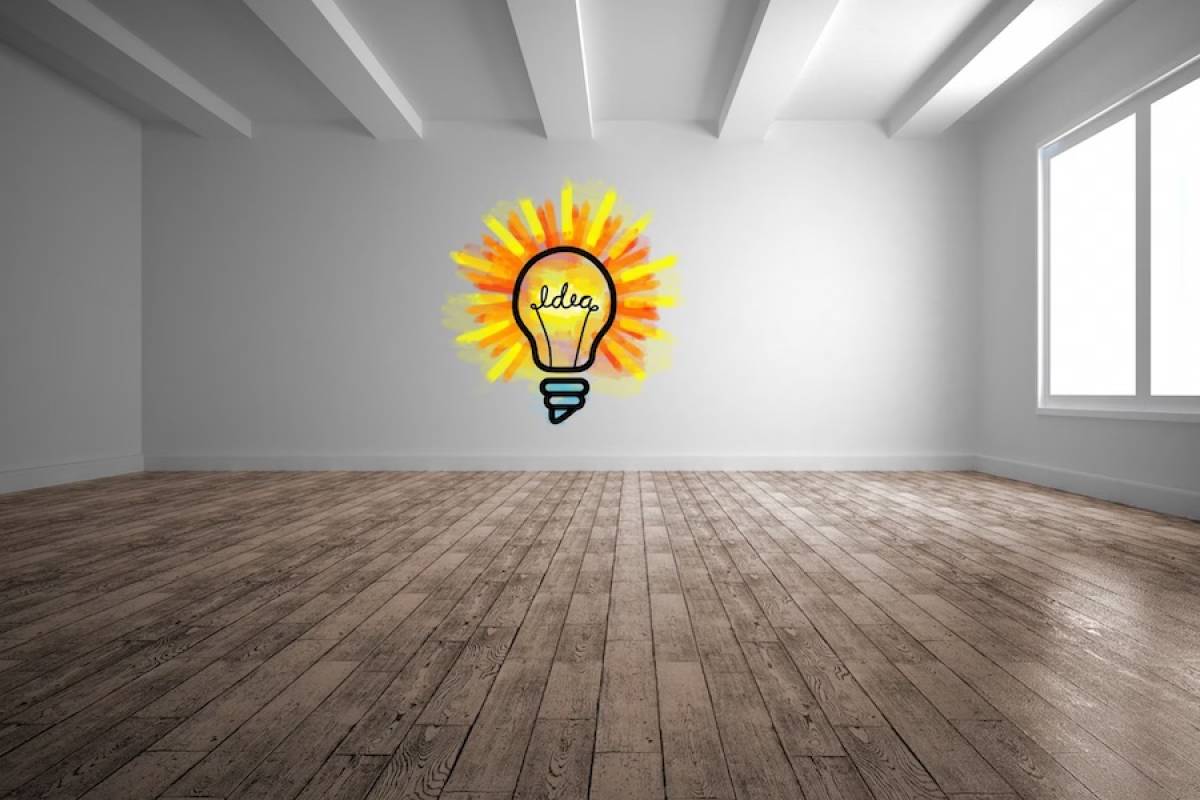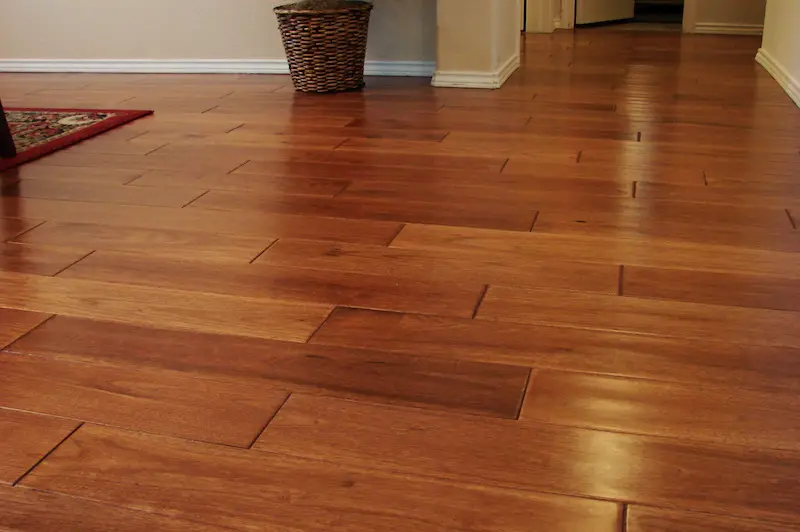Get Floored by These Inspiring Flooring Ideas and Facts

While getting the interiors done for the home, it is often that we tend to focus on choosing the perfect shade for the walls, selecting the right furniture pieces, and hand picking the relevant accessories to occupy the space. But, despite the fact that the floor is actually the base of the home, we often do not give our floors much thought.
However, there are different flooring materials available that can enhance the aesthetics of your home, with each material coming with its own set of pros and cons. An ideal floor is strong, sturdy, and greatly adds to the aesthetic of your space.
To select the best flooring material for your home, you first need to determine the room you are selecting the flooring for and the purpose it needs to serve. Once you have determined that, check the parameters of the various materials and work out which material works best for your space.
Here’s what you need to know about the various types of flooring available:
Types Of Flooring

1. Hardwood flooring
Hardwood has a warm and inviting feel and can elevate the look of any space. The two kinds of wood flooring available are:
- Solid wood
Natural wood has been in use as a flooring material for years and years and for good reason. It is sturdy and adds a great look to any space it is added to.
Wooden floors can be easily paired with a large variety of furniture, and works well with almost any colour scheme. But natural wood can be expensive and isn’t water resistant.
- Engineered wood
Engineered wood flooring is artificial wood flooring that feels and looks like natural wood flooring, but comes with a host of advantages, such as durability, pocket friendliness and better water resistance.
2. Tile flooring
Tiles are one of the most commonly opted flooring choices. There are various types of floor tilesavailable in different materials, colours, patterns, sizes and finishes.
Floor tiles are easy to install, durable, easy to maintain and are budget friendly. Some of the most commonly used floor tiles materials are:
- Ceramic
Ceramic tiles are made using a mixture with clay and fired in a kiln to produce sturdy tiles. The tiles have a top layer of color and design that does not fade away easily due to frequent use or exposure to harsh weather conditions.
These are some of the most commonly available tiles and are frequently used in homes due to their low prices and availability of a vast variety of designs and colors.
- Porcelain
Porcelain tiles are very similar to ceramic tiles, but are fired at higher temperatures, making them sturdier than ceramic tiles. Porcelain tiles also have a very low rate of water absorption and are often used on floors of spaces frequently exposed to water, such as bathrooms and balconies.
- Natural stone
Natural stone tiles can add an elegant and classy touch to any room they are used in. They are robust, long lasting and are not slippery when wet. But, unlike the other two tiles, these tiles are on the expensive side and certain stones are porous and may require additional treatments before use.
3. Marble flooring
Marble is a long-lasting natural stone flooring choice. It exudes royalty and luxury and comes with a hefty price tag.
While marble floors are easy to clean, they do require regular sealing procedures to prevent water and other liquids from seeping through.
4. Vinyl flooring
Vinyl flooring is very highly in trend right now due to the sheer number of designs and patterns available.
Vinyl is basically a thin sheet that is spread across the existing flooring base. Vinyl sheets are completely impervious to water, but even if they are slightly damaged you will have to replace the whole floor.
5. Glass flooring
Glass is one of the most elegant flooring choices, but it may not be a practical choice for homes with children or pets.
Glass floors are easy to clean, add a great aesthetic and are a common choice in commercial spaces since they do not wear away easily.
6. Laminate flooring
Laminate flooring simulates wood or sometimes stone. It features a photographic applique layer under a clear protective layer.
Key Facts & Advantages of the Different Flooring
1. Hardwood flooring
- Improves air quality
Hardwood flooring is a great choice for those homes with patients of asthma and other common allergies. You can simply brush or wipe your wooden floors and get rid of all the dust, pollen and other allergens from your floors.
- Eco friendly
Hardwood is one of the few eco-friendly flooring options available in the market. The production of hardwood floors does not result in the generation of harmful gases, such as nitrous oxide and methane. You can further reduce your carbon footprint by opting for wood that has been sourced locally.
- Wood floors can last a lifetime
Wood floors have been in use for hundreds of years, and even today a lot of our old monuments still have their original wooden floors intact. If used with proper care, wooden floors may last you for 50 years and even beyond.
- Flooring will change color over time
While shopping for hardwood floors be sure to inquire about the inevitable change in color. Exposure to sunlight and use can change the tone of the wood – while some wood will turn darker, some might even yellow.
- No two floors are exactly alike
If you opt for hardwood floors you are using real trees, and since no two trees are the same your floor will be a patchwork of various textures, colors and grains. This adds to the overall beauty of the floor and makes it feel more authentic.
- Hardness of a wood is measured by the JANKA HARDNESS TEST
The Janka Hardness Test is the measure of the force required to implant a steel ball about halfway into the wood. Wooden floors are very durable and difficult to scratch – the dents and scratches that you notice are on the surface of the finish, not on the actual wood.
2. Tile Flooring
- Unique installation
When we think of tiles, we think of spreading some mortar on the floor and individually placing tiles on it. But, there are also tiles such as mosaic tiles that are basically a number of different materials pasted together on a mesh sheet for an abstract and unique look.
- Tiles make room feel larger
Glass tiles and glossy tiles reflect maximum light, making the room brighter and feel more spacious. You can also use large sized tiles to create an illusion of more space.
- Good heat conductor
Tiles are a good conductor of heat. This means that during winters they get frigidly cold, while in summers they can get very hot (especially if exposed to direct heat, as in cases of patios and balconies).
- Good for health
Tiles are a great choice for people that suffer from asthma or allergies. The dirt, dust, and pollen stay on the surface of the tile; making it easy to spot them and brush them or wipe them off before they trigger an attack.
3. Marble flooring
- Impurities give marble its unique colors
Impurities present in the limestone during the process of metamorphism can re-crystallize. This results in the presence of various impurities in the marble that can impact the color and texture of the marble. For example, the presence of iron oxide can turn the marble brown or yellow, while the presence of feldspar and iron can result in a red or pink tinge.
- Limestone is used to make marble
Marble is formed when immense amounts of pressure and heat during metamorphism alter limestone. The calcite present in the limestone re-crystallises, resulting in the formation of marble. White marble is formed when the limestone is pure. If there are impurities in the limestone, the marble will have various coloured spots, depending on the impurity present.
- Hypoallergenic
Hypoallergenic refers to an element or a substance that does not trigger allergic reactions. Unlike carpets and rugs marble is not a dust or pollen magnet. The dirt stays on the surface and is easy to brush off or wipe off – making it a popular choice for homes with people who suffer from allergies or asthma.
- Cooler looks and cooler home
Marble is naturally an insulator. The surface does not heat up or cool down very quickly, keeping it cool in summers and warm in winters – making them a great choice for porches, balconies and outdoor stairs.
4. Vinyl flooring
- Aesthetics and designs
Vinyl flooring is available in a variety of “natural material” looks, such as wood look and stone look. You can get the aesthetic of hardwood or natural stone in your home at the fraction of the cost with vinyl flooring. They are also available in various light and dark colors for you to choose from.
- DIY installation
Vinyl flooring is not difficult to install and most people prefer to DIY the installation. All you need to do is watch a few installation videos online and you are good to go.
- Realistic flooring
Vinyl flooring replicates the look of natural flooring materials to the T and induces the same aesthetic as them, giving your room the same warm and inviting feel of materials like wood and natural stone.
5. Glass flooring
- Best for extended spaces- patios and balconies
Glass floors can help light penetrate through floors, making them a great addition to decks and balconies. Using any other material can close off the light source for the floor below, but glass floors can ensure that the lower floors receive ample light too.
- Glass floors can support 2x as much weight as a wood floor
When people see a glass floor, the first reaction is to take a step back because their brain often screams – “what if this floor breaks?” Well, well designed glass floors are super safe and sturdy and you do not need to walk across them cautiously. Most glass floors are made using laminated glass and tempered glass and are installed on aluminium frames – making them 2 times stronger than wooden floors.
- Glass floors can brighten up a dark space
Glass floors reflect light and allow light to pass through them, making your home look and feel a lot brighter. They are also a great way to light up rooms with minimal or no windows. You can easily add a glass floor at the upper level and let the natural light floor through to the lower levels, brightening up the whole space.
6. Laminate flooring
- It's made with printer
The top layer of the laminate is made using a printer. A thin layer of a “living paper” is made using 3D printing technology and this is coated with layers of aluminium oxide to protect it from damages such as scratches. It is this printing technology that gives laminate the look of a real hardwood floor.
- It can be installed on other flooring
Laminate flooring is often referred to as a “floating floor”. This means that it can be installed on existing flooring without using any materials that will damage the underlying floor, such as nails. Just make sure that your floor is clean and flat before you begin the installation process.
In Conclusion
The best flooring material for your home will depend upon your requirements from the floor and the budget you have allocated for the same.
The plethora of flooring material choices ensures that you can easily find flooring material that works well for your space and helps you stay on budget too.
Before you choose your flooring carefully consider the pros and cons of each material and weigh them against each other.





















![Should You Opt for Intermittent Fasting in a Carnivore Diet? [node:title]](/sites/default/files/styles/video_thumbnail_bottom/public/beef_fillet_meat_steak_intermittent_fasting_carnival_diet.jpg?itok=kSdTJ3HZ)

